PERFAD™ 3500 Series organic friction modifiers for manual transmission motorcycles
As cities become more populated, there are even more vehicles on our roads. In some countries and cities, motorcycles comprise the majority of vehicles on the road. As a result, emissions regulation of motorcycles has become a larger priority and stricter requirements are being implemented globally.
Passenger car engine oils use a combination of lower viscosity lubricants and the addition of friction modifiers to meet fuel economy and emissions requirements. The use of friction modifiers in four-stroke motorcycles has been limited because most motorcycles utilize a “wet” clutch which uses the same oil used to lubricate the transmission and engine. The opposing needs of low friction in the engine and transmission while maintaining high clutch friction have not been previously addressed by traditional friction modifiers. Croda recently introduced the Perfad 3500 series of organic friction modifiers to address the unmet need of providing low steel/steel friction and high clutch friction for applications such as 4-stroke motorcycle oils.
To demonstrate the performance of the Perfad 3500 series of organic friction modifiers, we top treated seven commercially available motorcycle oils at 0.5% or 1% depending on the solubility of the four friction modifiers in each oil. We tested them in the JASO T903 clutch friction test and the mini traction machine (MTM) steel/steel friction test. MTM testing was conducted from 0.005 ms
-1 to 3 ms
-1 to achieve boundary and mixed lubrication. All seven top treated oils demonstrated a significant reduction in steel/steel friction. In two of the top treated oils, the Perfad 3500 series friction modifiers maintained or improved the clutch friction. There was a slight reduction in clutch friction in 3 oils, but the reduction was small enough that they still maintained their untreated T903 rating of MA2, MA, or MB. A typical result is shown in
Figure 1.
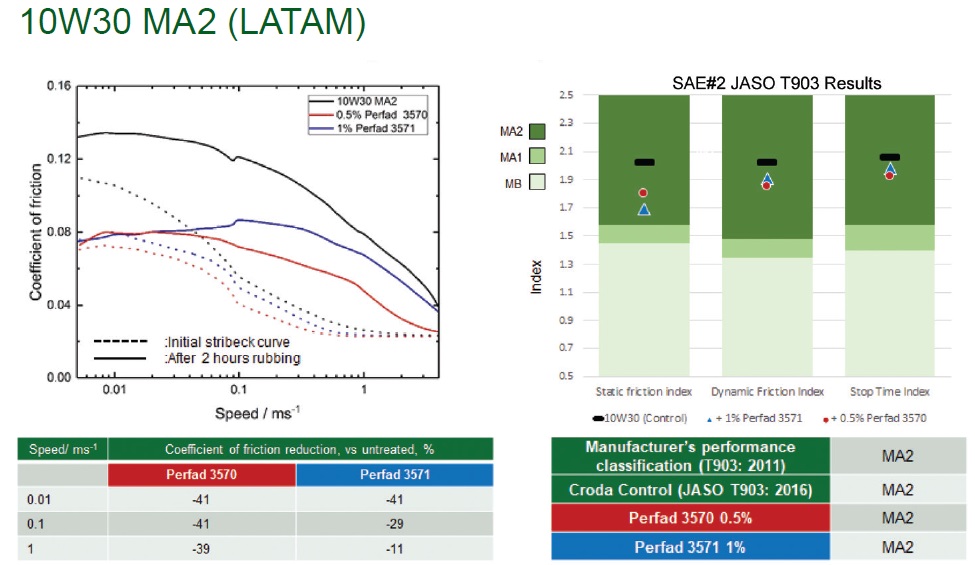 Figure 1. (a) Shows the frictional performance of top treated motorcycle engine oils. (b) Shows the performance in the JASO T903 test.
Priolube™ 3997: A new oxidatively stable thickener
Figure 1. (a) Shows the frictional performance of top treated motorcycle engine oils. (b) Shows the performance in the JASO T903 test.
Priolube™ 3997: A new oxidatively stable thickener
Croda recently introduced a new oxidatively stable thickener called Priolube 3997. It is designed to replace other less oxidatively stable complex esters or bright stock. The properties of Priolube 3997 can be viewed in
Figure 2. The high VI of 290 indicates the potential of Priolube 3997 to improve the VI of lubricants when used as a substitute for bright stock.
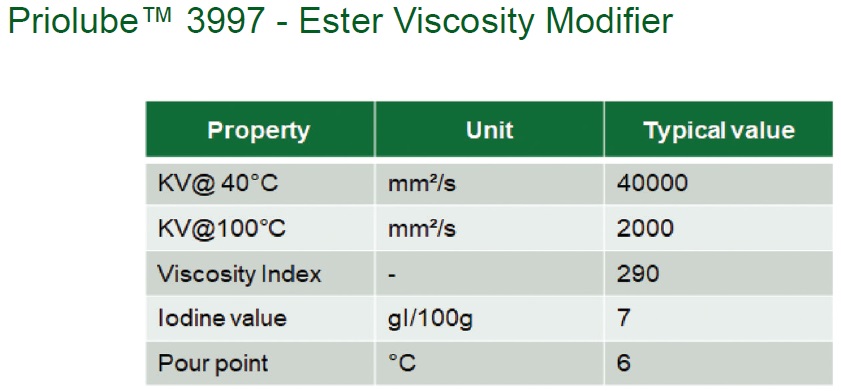 Figure 2. Table showing the typical physical properties of Priolube 3997.
Figure 2. Table showing the typical physical properties of Priolube 3997.
The oxidative stability of Priolube 3997 was evaluated using the Rapidoxy test (ASTM D7545) and compared to that of two other complex esters of similar viscosity. The Oxidation Induction Time (OIT) was determined, which is the time taken for 10% of the oxygen to be consumed and indicates the onset of rapid oxidation. Priolube 3997 gave an OIT of 245 minutes and significantly outperformed the other two products which gave OITs of 85 minutes and 72 minutes. We then tested a 10% treat rate of the thickeners in Chevron 600R, a Group II base oil. One of the complex esters caused a decrease in oxidative stability from 82 minutes for straight Group II. The other complex ester provided a slight increase in stability to 96 minutes. Priolube 3997 offered the best performance of 125 minutes, which was an improvement 3x better than the next best complex ester.
Results shown in Figure 3.
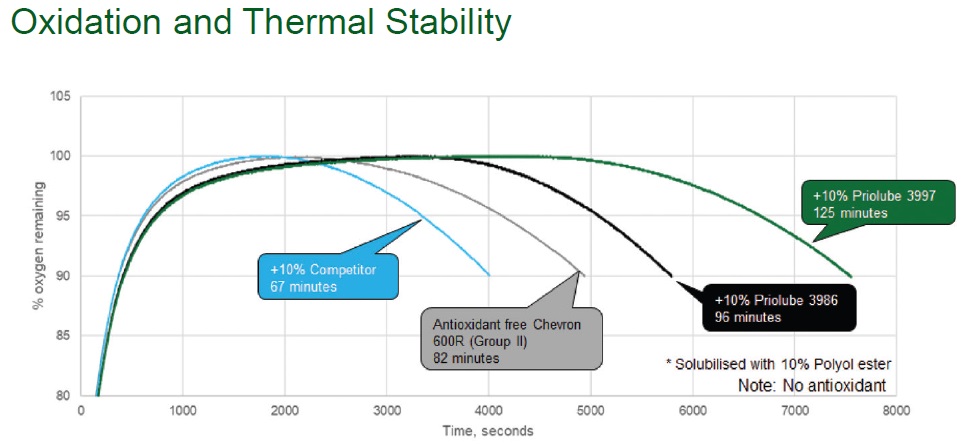 Figure 3. Oxidation and thermal stability at 140°C: 10% in Chevron 600R Group II base oil.
Figure 3. Oxidation and thermal stability at 140°C: 10% in Chevron 600R Group II base oil.
Due to sulfur limits and the desire for lower viscosity base fluids for passenger car engine oils, manufacturers are decreasing their production of Group I base oils in favor of Group II. This has tightened the market for Group I base oils and caused lubricant manufacturers to consider alternate thickeners. In order to consider its suitability as a replacement, we compared the oxidative stability of Priolube 3997 to bright stock. Bright stock outperformed Priolube 3997 in the Rapidoxy test due to its high natural sulfur content which acts as an antioxidant. However, this sulfur also forms sulfur complexes that drop out as sludge and deposits. An oven test at 180°C demonstrates the ability of Priolube 3997 to prevent sludge and deposits compared to bright stock.
Results shown in Figure 4.
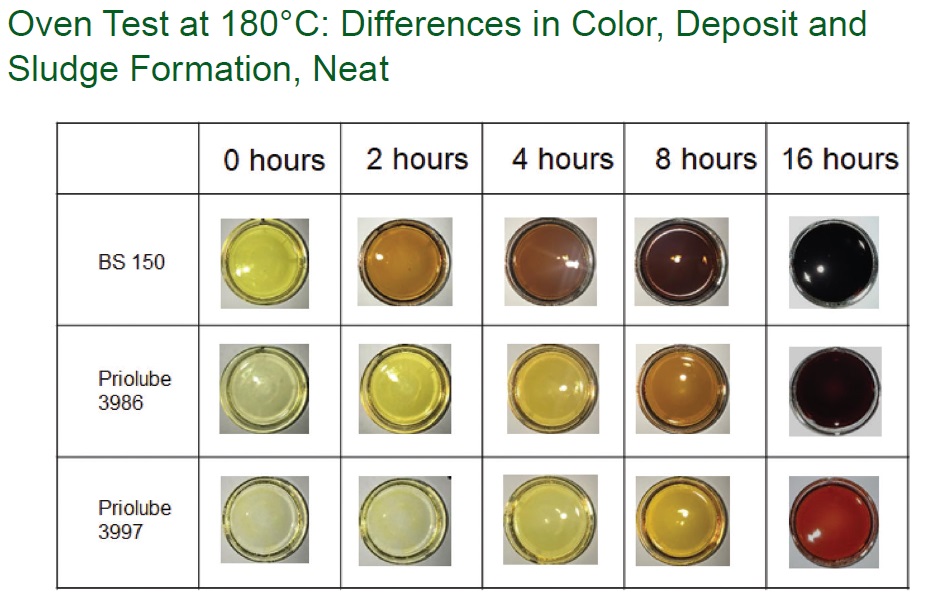 Figure 4. Shows results of high temperature oven tests for Priolube 3997 versus brightstock 150 and Priolube 3986.
Figure 4. Shows results of high temperature oven tests for Priolube 3997 versus brightstock 150 and Priolube 3986.
Priolube 3997 also offers a lubricity benefit compared to other complex ester thickeners and bright stock. We evaluated ISO 150 gears oils made with a competitive complex ester, bright stock and Priolube 3997. We tested the gear oils in the mini traction machine at 0.05 m/s and 100°C using a 50:50 sliding to rolling ratio. The frictional performance was observed as contact pressure was increased from 1.25 GPa – 3.2 GPa. The Priolube 3997 thickened gear oil demonstrated lower friction across the contact pressure range. At 1.3 GPa, the Priolube 3997 containing gear oil offered an 11% friction reduction vs the gear oils containing bright stock or the competitive complex ester.
Results shown in Figure 5.
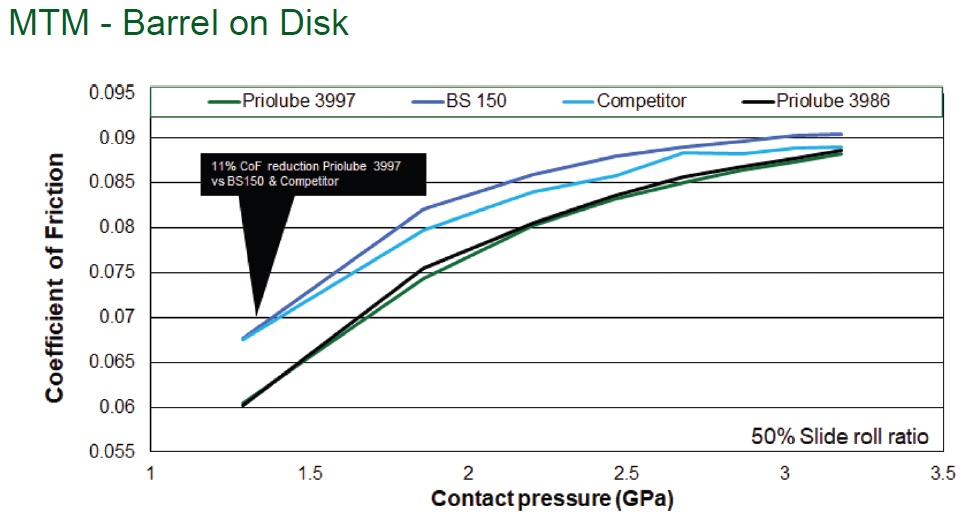 Figure 5. Frictional performance of ISO 150 gear oil formulations with varying contact pressure.
Figure 5. Frictional performance of ISO 150 gear oil formulations with varying contact pressure.
Another benefit that Priolube 3997 provides compared to bright stock is superior wear performance. We evaluated ISO 150 gear oils made with Priolube 3997 and bright stock in a simulated FZG gear test using an SRV rig. The gear oil made with bright stock failed stage 13 while the gear oil made with Priolube 3997 was able to pass stage 13.
Because Priolube 3997 is a relatively large molecule, it was appropriate to test its shear stability. An ISO 150 gear oil formulation was made using 5% Priolube 3997. In a 20-hour KRL shear stability test, the gear oil made with Priolube 3997 had a viscosity loss of only 4.1%. This result was superior to the viscosity loss of 4.7% and 8.5% for the gear oils made with competitive complex esters.
Priolube 3997 is a thickener that provides superior oxidative stability, lubricity, and lower friction than competitive complex esters. It creates less sludge and deposits than bright stock, while providing improved lubricity and lower friction. Priolube 3997 also has the potential to increase gear loading compared to formulations made with bright stock.
Changes to Ecolabel
There was a recent revision of the EU Ecolabel scheme. Three product groups replace the five groups that were used in the 2011 revision.
•
Total Loss Lubricants (TLL) include chainsaw oils, wire rope lubricants, concrete release agents, total loss greases and other total loss lubricants.
•
Partial Loss Lubricants (PLL) include open gear oils, stern tube oils, two-stroke oils and, partial loss greases.
•
Accidental Loss Lubricants (ALL) include hydraulic systems, metalworking fluids, closed gear oils and, accidental loss greases.
Figure 6 summarizes the minimum readily biodegradable content required for each product group.
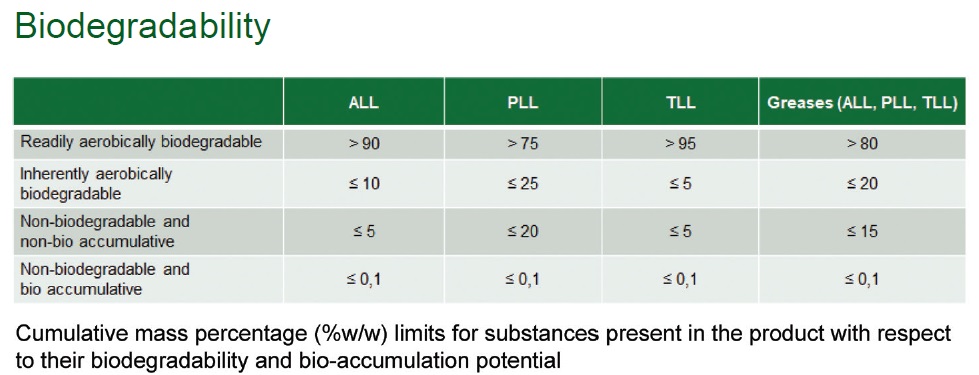 Figure 6. Biodegradability guidelines for each lubricant class.
Figure 6. Biodegradability guidelines for each lubricant class.
Ecolabel no longer specifies a renewability requirement unless the term “bio-based” or “bio-lubricant” is used. In order to be called “bio-based”, the minimum bio-based carbon content in the final product must be 25% per EN 16807. Renewability content can no longer be calculated. It must be measured by ASTM D6866. Furthermore, renewable ingredients from palm kernel oil or palm oil must be obtained from a certified sustainable source.
The LuSC list will be adapted to reflect the new criteria in EU Ecolabel Revision November 2018. Croda has reapplied for all existing products to be added to the new LuSC list. Croda’s updates to the LuSC list will continue to appear throughout 2019. Croda offers 17 esters that will be LuSC compliant in 2019. Viscosities available range from 15 cSt @40°C to 47,000 cSt @ 40°C.